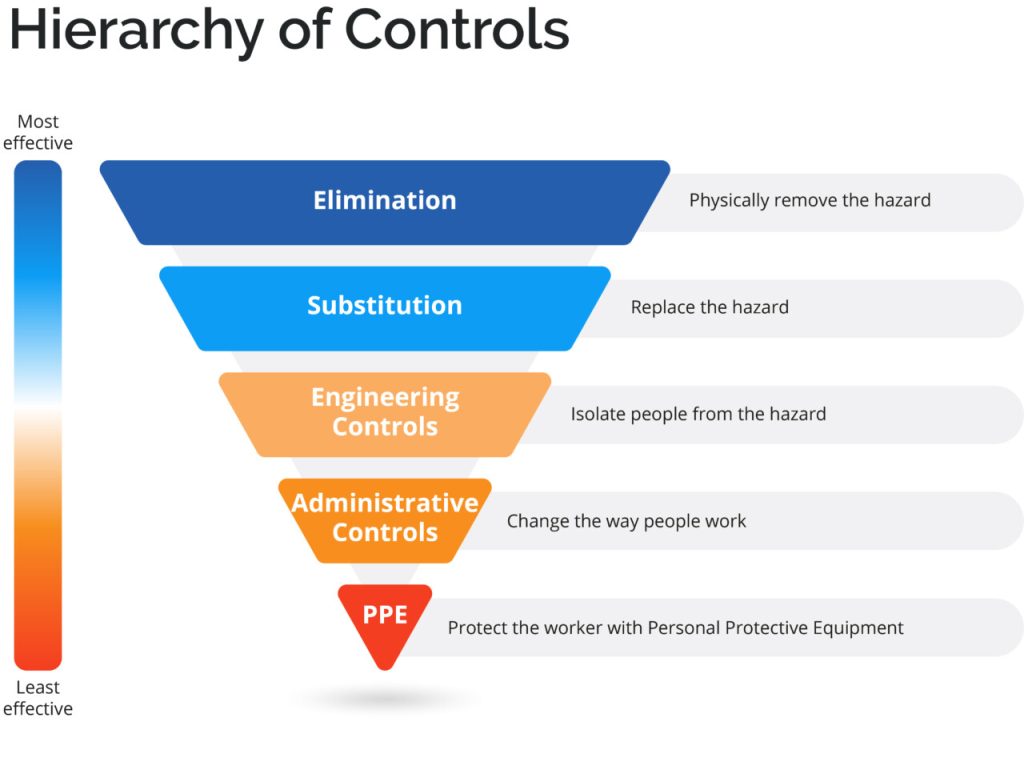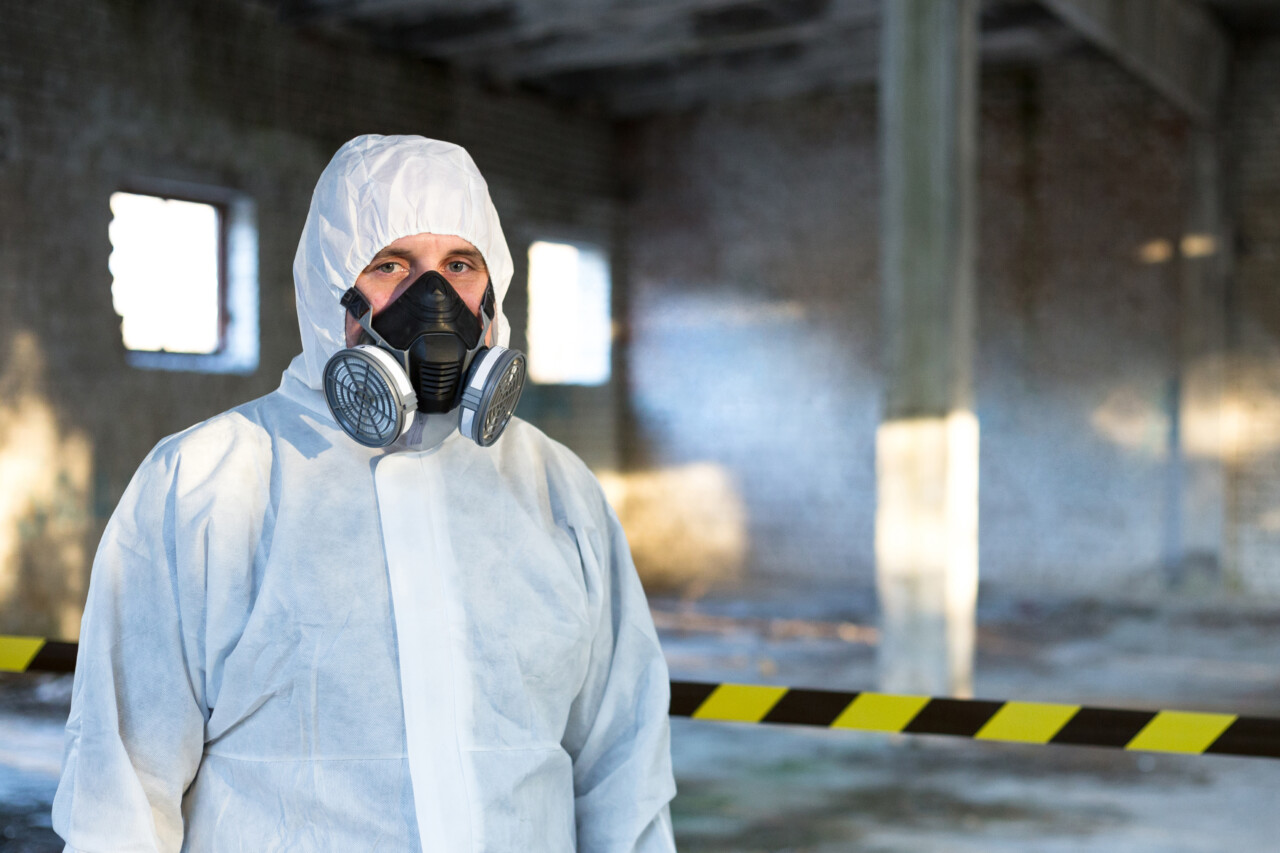In a recent webinar, Take a Deep Breath: How to Develop a Respiratory Protection Program that Works, we walked through why organizations often struggle to meet respirator usage regulations and how EHS software can support an effective and sustainable respiratory protection program. In this post, one of our resident experts, Sean Baldry, CRSP, provides answers to some of the most frequently asked questions we get from EHS practitioners about respiratory protection programs.
Is it Necessary to Quantify Worker Exposures to Respiratory Hazards Before Selecting a Respirator that Will be Used for a Medical Evaluation?
Since the selection of respirators should be based on the specific respiratory hazards that your employees will be exposed to or are likely to be exposed to in your workplace, respirator selection decisions for your respiratory protection program must be based on objective, quantifiable evidence. OSHA requires that employers identify the state and physical form of respiratory hazards and make a reasonable estimate of the degree of exposure to those hazards before they select a respirator for their respiratory protection program.
While you can certainly use qualitative assessments to identify the presence of a respiratory hazard in the workplace, only quantitative exposure assessments, determined through industrial hygiene sampling, will provide enough objective evidence to help you make an informed decision on what is the most appropriate respirator to use.
Vendors offer a range of filtering respirators, each specifically designed to filter a nominal particle size or to adsorb constituents from the air before they can reach the lungs. In certain environments, filtering chemical agents from the air is not possible, and supplied air respirators may be required.
Determining the right respirator to optimize protection for your employees is only really possible if you’re able to quantify exactly how much of a particular respiratory hazard the worker may be exposed to.
During a medical evaluation, employees will likely be asked questions about the type of respiratory protection they have or will use, as well as the type of hazards or toxic substances they may be exposed at work. By validating the exact respirators to be used in advance of the medical evaluation, you can more easily identify discrepancies between respiratory hazards and type of protectors chosen, and confirm that the respirator chosen as part of your organization’s respiratory protection program will not create an unreasonable burden to the health of the wearer.
Are Medical Evaluations Required by OSHA’s Respiratory Protection Standard Protected under Health Privacy Regulations?
Under OSHA’s Respiratory Protection Standard, an employee must undergo a medical evaluation before they’re required to use a respirator on-the-job, to ensure that it won’t create a physiological burden that could endanger the employee’s health and safety, especially considering the presence of possible pre-existing health conditions.
Normally, this medical evaluation is completed by a physician who assesses the employee’s ability to use a respirator through review of a medical questionnaire. While the information contained in the questionnaire is often sufficient to complete the exam, in some circumstances, a physician may recommend the employee undergo additional tests, such as pulmonary function testing, to confirm that their health will not be put at risk through use of the respirator.
Since the medical questionnaire and any other test result used to assess whether your worker is medically fit contains sensitive health information, it is considered a medical record under OSHA’s 1910.1020 Standard, which governs access to employee medical records. As a result, this document must be kept secure at all times to protect the health confidentiality of your employees. Generally, it means that an employee’s medical records, including the questionnaire, cannot be shared without that employee’s written consent.
If an Employee Fails the Respirator Fit Test or Medical Evaluation, what Must the Employer do? Does the Employee have to Pay for these Tests?
Interestingly, while OSHA’s Respiratory Protection Standard requires that employers provide respirators, training, and medical evaluations for employees at no cost as part of a respiratory protection program, it is strangely silent on the matter of costs attributed to respirator fit testing. Notwithstanding, it would suggest that if employers are on the hook for paying for medical evaluations as well as the cost to equip and train workers on respirators, we can likely assume that fit testing is included.
Now, in the event that an employee fails a medical evaluation or respirator fit test, you as the employer have two options:
- A. Pay for the worker to re-do evaluations or respirator fit tests until they pass
- B. Re-assign the individual to a position where they will not be required to wear a respirator
If your organization chooses option A, you would then be expected to cover those additional costs.
Some employers may scoff at the idea of having to move an employee who fails a medical evaluation or respirator fit test to a different position. Yet, it’s important to bear in mind that failing a medical evaluation due to an underlying medical condition may introduce obligations under disability protection regulations, such as the Americans with Disabilities Act (ADA). Generally, the ADA requires employers to make reasonable accommodations for physical and mental limitations of which they are aware.
It’s also crucial to remember that respirator protection is PPE. It should be used only as a last-line of defense in your respiratory protection program when all other options available on the hierarchy of controls are exhausted.

So, before you consider taking steps that could create conflict on disability and accommodation grounds, look at these circumstances closely and consider whether the respiratory hazard could be mitigated through product or raw-material substitution, engineering controls, or other administrative measures.
If Employees are Required to Wear Face Coverings According to COVID-19 Public Health Guidelines, and they Voluntarily Choose to Wear an N95 respirator, would the Requirements of Appendix D of OSHA 1910.134 Apply?
It’s important to remember that generic face coverings recommended in public health guidelines to prevent the spread of COVID-19, such as loose-fitting paper and cloth masks or even bandanas, are not only not considered respirators, they’re generally not considered an acceptable form of PPE, since their protective efficacy isn’t always tested under controlled conditions. In this respect, businesses with employees wearing cloth masks would likely not be obligated to meet the additional requirements covering voluntary respirator use under Appendix D.
Yet, if those employees choose to wear a filtering facepiece respirator, such as an N95, to meet public health masking recommendations, that’s a different matter. Since the individual is wearing a respirator as defined by OSHA, then it is reasonable to assume that Appendix D would apply to that voluntary use.
Consequently, those employers would need to share specific information with those workers to ensure the safe and effective use of the respirator, including things like:
- Verifying that the selected respirator is certified by NIOSH. You can find more information on how to detect counterfeit respirators here.
- Advising employees to read and comply with all manufacturer requirements pertaining to the inspection, use, cleaning, maintenance, and limitations for the respirator.
- Advising employees that the respirator selected may not protect them against other hazards in the workplace, and that the respirator cannot be used in place of another respirator identified for a specific work area and/or contaminant of concern.
Remember, it’s essential that you’re able to demonstrate that the mandatory communication required under Appendix D has occurred. Consider providing a written statement to the employees that they would have to sign to acknowledge they have received and understand this information. It just might help protect your business from regulatory citations.
Our Employees are Concerned about Exposure to COVID-19 When Using a Respirator Connected to a Quantitative Fit Testing Device. What Alternatives Exist to Avoid Employees Sharing a Fit Test Respirator?
OSHA requires that respirators used in fit testing and training must be cleaned and disinfected after each use. So, ensuring that respirators are properly cleaned and disinfected in the presence of your employees may help alleviate concerns about exposure to COVID-19 or other transmissible virus or bacteria on the facepieces. You may even consider allowing employees to clean and disinfect respirators themselves, with an EPA-approved disinfectant, provided the employees have the training to do so. This may offer greater peace of mind for those anxious workers.
Finally, for instances where a quantitative fit test isn’t absolutely required, you may consider performing qualitative fit tests that do not require sharing of a common respirator, provided your organization has the equipment and competency to do so.
If Contractors are Required to wear Respirators to Protect Themselves from Respiratory Hazards Created by the Work for which they were Hired, is the Host Employer Obligated to Create a Written Respiratory Protection Program?
Interestingly, OSHA doesn’t distinguish between different employers with respect to their legal obligations under the Respiratory Protection Standard. That said, it’s advisable that host employers contracting the services of an external party ensure that expectations regarding respiratory protection programs are clearly outlined, communicated, and verified as part of the contractor prequalification process.
Before hiring a contractor, it’s recommended to do the following:
- Review the type of work to be performed, and whether that work will expose the contractor’s employees to respiratory hazards
- Confirm whether the contractor requires use of respirators for the work performed or work area. If so, the contractor should be asked to provide evidence of compliance to applicable requirements, including the availability of a written respiratory protection program
- Discuss how the parties will ensure that requirements in this respiratory protection program will be met during the entirety of the project.
Again, don’t just take the contractor’s word for it – ask for documentation to confirm they meet all applicable requirements under the Standard. If they can’t, you may want to consider another contractor for the project. Otherwise, you may want to agree with the contractor that they will follow your respiratory protection program, if one exists, but with the understanding that they would be expected to cover costs for their employees with respect to fit testing, training, and respirator purchase.
Lastly, it’s recommended that the contractor’s work is regularly audited to help assess their compliance to respiratory protection program obligations. These audits should be performed by both the contractor and the host employer, with identified deficiencies documented and action plans tracked to ensure deviations from acceptable practices are corrected quickly.
EHS software solutions offer great tools to simplify this process of inspection and action management, centralize respirator fit testing records in a single, secure location, and streamline all aspects of your respiratory protection program.
Learn How to Build a Best-in-Class Respiratory Protection Program
For more information on the essential elements to include in your respiratory protection program, common mistakes you should avoid, and how EHS software solutions can help, watch this webinar:










